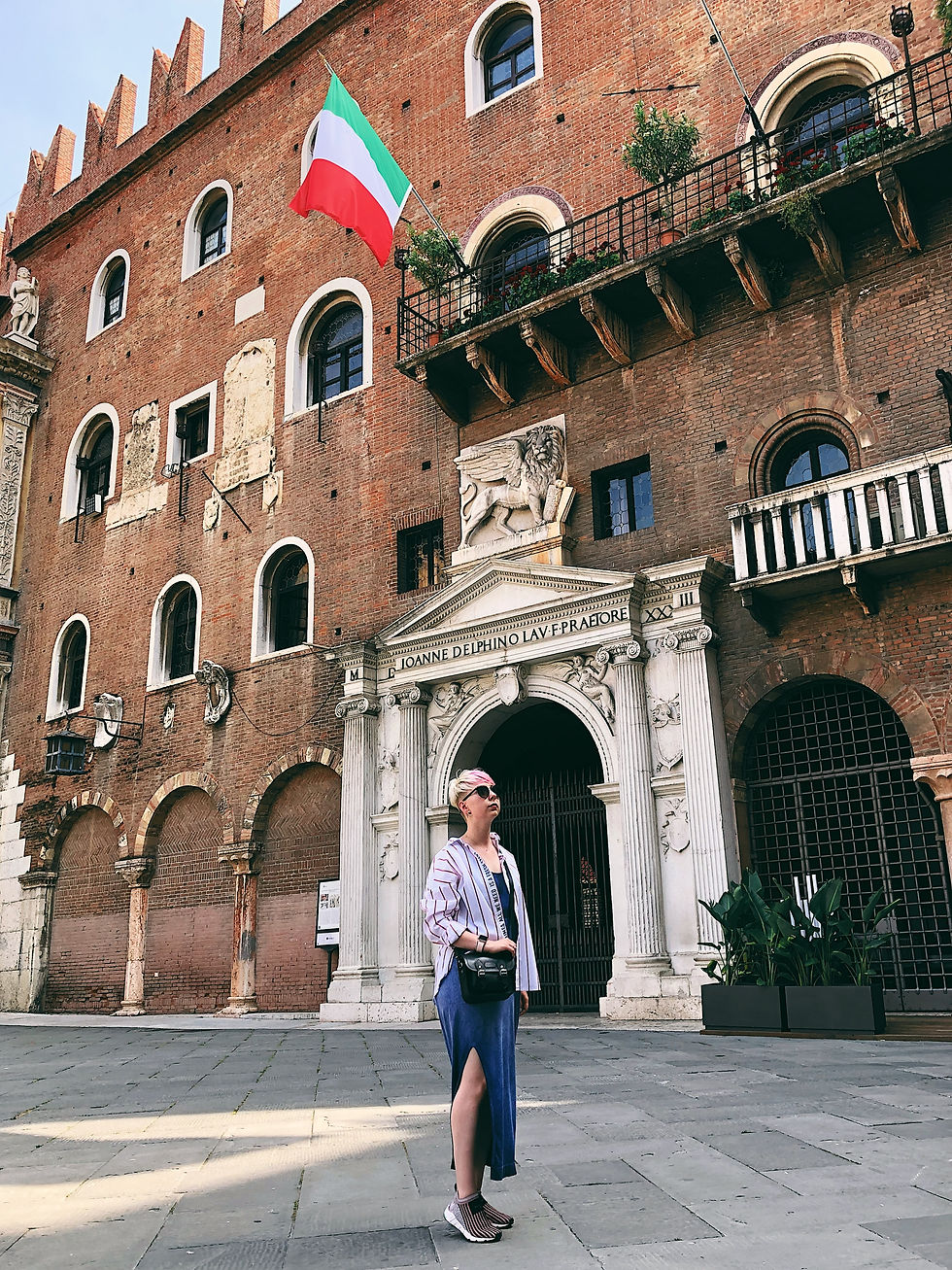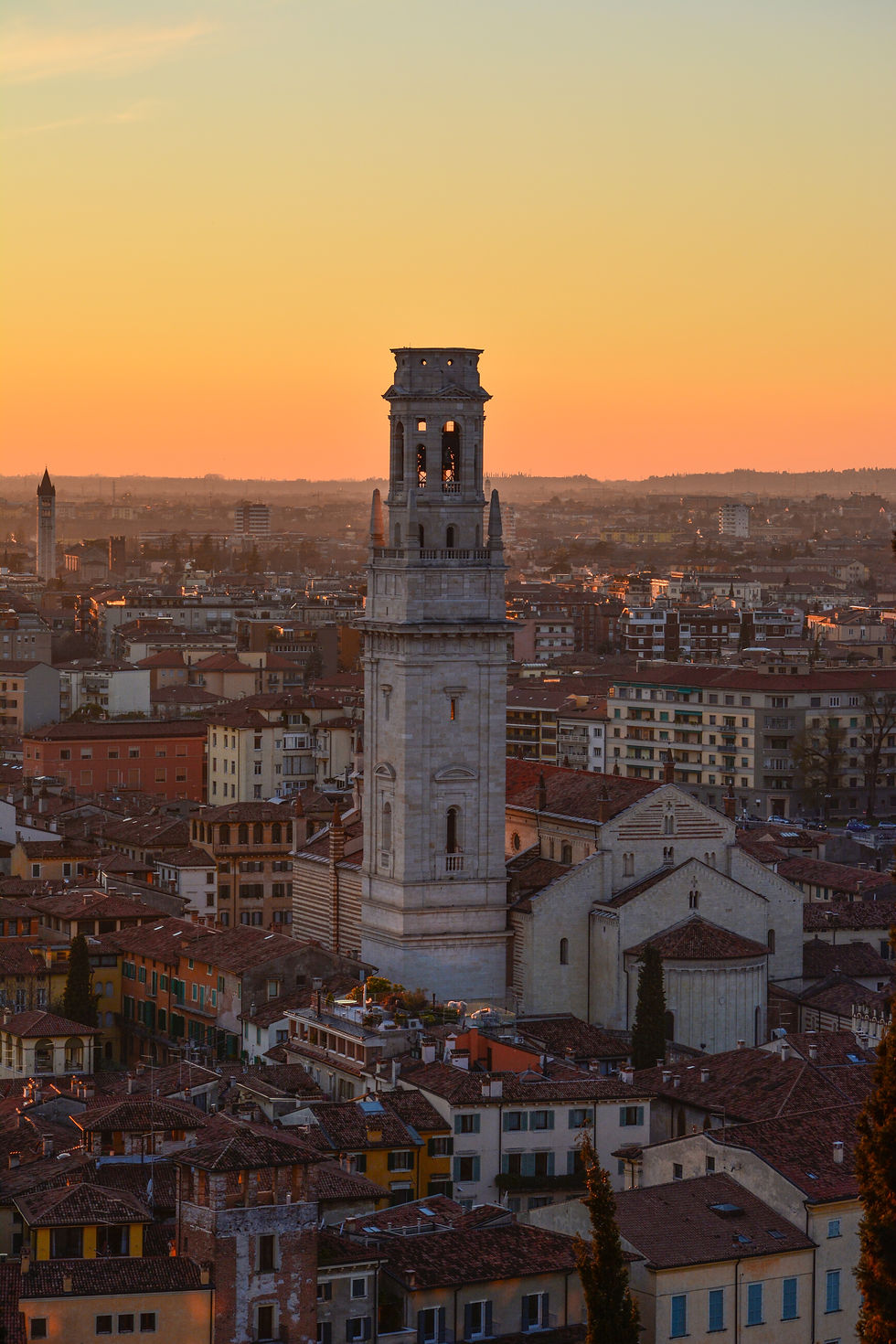Best known for its Shakespeare associations, Verona attracts a multinational gaggle of tourists to its pretty piazzas and knot of lanes, most in search of Romeo, Juliet and all that. But beyond the heart-shaped kitsch and Renaissance romance, Verona is a bustling centre, its heart dominated by a mammoth, remarkably well-preserved 1st-century amphitheatre, the venue for the city's annual summer opera festival. Add to that countless churches, a couple of architecturally fascinating bridges over the Adige, regional wine and food from the Veneto hinterland and some impressive art, and Verona shapes up as one of northern Italy's most attractive cities. And all this just a short hop from the shores of stunning Lake Garda.

1. Roman Arena
Built of pink-tinged marble in the 1st century AD, Verona's Roman amphitheatre survived a 12th-century earthquake to become the city’s legendary open-air opera house, with seating for 30,000 people. You can visit the arena year-round, though it’s at its best during the summer opera festival. In winter months, concerts are held at the Teatro Filarmonico. From October to May, admission is €1 on the first Sunday of the month. The eighth-biggest amphitheatre in the Roman Empire and predating the Colosseum in Rome, nothing of the incredible inside is visible from outside. Pass through the dingy ancient corridors, wide enough to drive a gladiator's chariot, to re-emerge into the massive, sunlit stone arena, at least 50 levels of seating rising from the mammoth, oval showground. Note the amphitheatre is completely open so this is not a great place to visit in the rain.
2.Museo Di CastelVecchio
Bristling with fishtail battlements along the river Adige, Castelvecchio was built in the 1350s by Cangrande II. Severely damaged by Napoleon and WWII bombings, the fortress was reinvented by architect Carlo Scarpa, who constructed bridges over exposed foundations, filled gaping holes with glass panels, and balanced a statue of Cangrande I above the courtyard on a concrete gangplank. The complex is now home to a diverse collection of statuary, frescoes, jewellery, medieval artefacts and paintings.
Scarpa's modern reworking of the interior comes as a surprise after the austere medieval exterior and provides a contrasting backdrop for the exhibits. Highlights include some wonderful 14th-century glass, the Pisanello room with its well-preserved frescoes, the collection of Flemish art and works by Renaissance Veronese and Venetian painters. Look out for the Cangrande coat of arms throughout – Cangrande means 'Top Dog' and the family's comedy shield features two dogs climbing a ladder! After viewing the exhibition, clamber out onto the ramparts for views of the river and old city defences.

3.Giardino Giusti
Across the river from the historic centre, these sculpted gardens are considered a masterpiece of Renaissance landscaping, and are named after the noble family that has tended them since opening the gardens to the public in 1591. The vegetation is an Italianate mix of the manicured and natural, graced by soaring cypresses, one of which the German poet Goethe immortalised in his travel writings. According to local legend, lovers who manage to find each other in the gardens' petite labyrinth are destined to stay together. If you do, whisper sweet nothings while gazing out at the city from the belvedere (lookout), accessed from the back of the gardens. Forget the Casa di Giulietta, this is where the real romance is in Verona.

4.Locanda 4 Cuochi With its open kitchen, urbane vibe and hotshot chefs, you're right to expect great things from Locanda. Culinary acrobatics play second fiddle to prime produce cooked with skill and subtle twists. Whether it's perfectly crisp suckling pig lacquered with liquorice, or an epilogue of gianduja ganache with sesame crumble and banana, you will be gastronomically impressed.
5.Adige Rafting
The Adige river is the second-longest river in Italy after the Po, running from the Reschen Pass in Austria to the Adriatic Sea. It is a defining feature of Verona, and rafting along it offers a surprising, new perspective as you pass beneath a dozen bridges past the Castelvecchio to finish at the ruins of the Venetian customs house.
In summer, Adige Rafting also runs a convivial Raft & Wine tour (€35 per person), which includes pit stops for plates of prosciutto and prosecco. Embark at the Bottagisio Sports Center, where there are changing rooms.

6.Funicolare di Castel San Pietro
For the best view of Verona, take a ride up the cable railway to the cypress-ringed Castel San Pietro (closed for restoration). Its ramparts are the domain of kissing couples enjoying the view of the medieval city embraced within the swooping bends of the Adige river. To descend, take the zigzagging staircase that leads back to the Ponte Pietra.
7.Sunday Flea Market in Verona
The flea market fills Piazza San Zeno and the surrounding streets, and is a feast of art nouveau light fittings, gramophone players, Fascist-era bike parts and lots of alarm clocks – a real mix of antiques and junk that you could spend all day browsing.

8.Juliet’s house
Juliet’s house (Casa di Giulietta) is one of the main attractions of Verona with the most famous balcony in the world. Every day crowds of people make their way through the narrow archway into the courtyard to admire and photograph the famous balcony. Couples of all ages swear eternal fidelity here in memory of Shakespeare’s play “Romeo and Juliet”.
And all this even though the two main characters never really existed and William Shakespeare never went to Verona in his lifetime. However, Verona is inextricably linked with the fate of the two lovers. In recognition of this factor and in order to offer the countless couples who come to Verona every year a worthy location, the city of Verona bought today’s house of Juliet from the Dal Capello family in 1905. Due to the similarity of their names they declared the house to be the family residence of the Capuleti family – a new tourist sensation was created!

9.Enjoy lunch in Piazza Bra
Normally, I wouldn’t recommend eating directly across such an iconic sightseeing attraction, but in Verona I do. There are some excellent restaurants lining Piazza Bra, all offering delightful views across the square to the Arena di Verona. Whether you stop for lunch, dinner or an aperitif, it’s a fabulous people-watching spot.
I actually needed to work one afternoon, and found excellent WiFi and delicious food at Liston12 restaurant.
One of the city’s best wine bars, Vini Zampiera alla Mandola, is steps from the Piazza Bra. Here you can sample world-class wines, served with delicious bar snacks such as arancini and cured hams.

10.Climb the impressive Torre dei Lamberti
Located in the Piazza delle Erbe, this is the tallest tower in Verona at 84m high and well worth the climb to the top. You can either ascend the stairs or take the elevator. It was originally built in the 12th century and boasts incredible views across the city.


Comentários